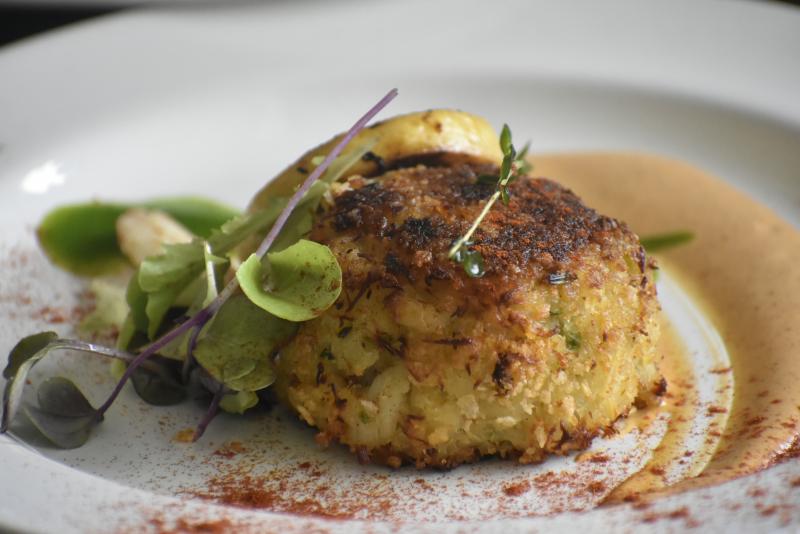/asian-shore-crab-1005631112-a6e8ab6310ac4bee997f65530cacf76f.jpg)
The Asian shore crab is an invasive species found along the Atlantic coast of the United States, native to the coastal waters of the western Pacific Ocean from southern Russia to Hong Kong. Also invasive in parts of Europe including France and Germany, the Asian shore crab likely found its way to both Europe and the United States via international shipping vessels in the early 1980s.
Hemigrapsus sanguineus, also known as Japanese shore crab, is an opportunistic omnivore capable of reproducing rapidly. Measuring no more than 2 inches, the invasive crab is easily identified by its hard upper shell and alternating light and dark bands of color across its front walking legs.
A study over eight years in the western Long Island sound found that as the number of Asian shore crabs increased, the population of three native crab species — flatback mud crab (Eurypanopeus depressus), Atlantic rock crab (Cancer irroratus), and spider crab (Libinia emarginata) — decreased. The flatback mud crab's population declined by 95%. Scientists specializing in invasive species believe that the Asian shore crabs' prolific breeding ability and wide-ranging diet may lead to impacts on a variety of species, including other crabs, fish, mussels, and lobsters.
How the Asian Shore Crab Became an Invasive Species
When ships containing cargo travel long distances, they sometimes use water stored in tanks or cargo holds to make up for lost weight as goods are delivered, providing stability in rough seas and making it easier to maneuver the vessel. This is called ballast water, and it is one of the major pathways for the introduction of invasive species around the world. Researchers believe Asian shore crabs arrived in the United States in the early 1980s, when boats released ballast water carried from the crab's native waters into various capes and inlets in the northern Atlantic coast.
The first documented sighting of the Asian shore crab was in 1988 in Cape May County, New Jersey. The crab's range and population quickly expanded from Maine to North Carolina, and researchers expect its population to continue to expand.
Problems Caused by the Asian Shore Crab
Asian shore crabs inhabit rocky intertidal zones, or areas where the ocean meets the land between high and low tides. Being opportunistic and omnivorous, they feed on a variety of plants and animals including mussels, clams, periwinkles, European green crabs, macroalgae, salt marsh grass, and small invertebrates such as amphipods, gastropods, bivalves, barnacles, and polychaetes (marine worms). Because they are eating so many different things, their impact on ecosystems could be widespread, and is difficult to fully determine.
There is evidence (like the research in Long Island referenced earlier) that the increased presence of Asian shore crabs means less other species of crab will be in an area. Marine biology researchers believe that the shore crab's high fertility, superior ability to compete for space and food, lack of parasites in Atlantic waters, and direct predation on co-occurring crab species, all have the potential for substantial impacts on populations of mollusks and crustaceans. The broad, system-wide impact remains unknown, particularly since some of the Asian shore crab's primary targets have been other invasive species like the European green crab and the periwinkle (a marine snail).
Asian shore crab is now the dominant crab in rocky intertidal habitat along much of the Northeast coast of the United States, sharing space amidst rocks and boulders with other crab species. In a study comparing it to European green crabs, researchers found that Asian shore crabs had significantly higher feeding rates on larger mussels, implying that these crabs have a larger impact on prey populations. If this is the case, Asian shore crabs out-competing and replacing European green crabs could have a significant impact on Atlantic coast ecosystems, even if the European green crab is also an invasive species.
Efforts to Curb Environmental Damage
Once an invasive species has established a population in a new environment, it is typically very difficult to eradicate. As a result, many environmental groups and NGOs advocate for the end of ballast water discharge as a way of stopping marine species from entering a new ecosystem in the first place. Federal law requires ships entering the Great Lakes region to exchange ballast water from freshwater systems with ocean salt water before entering, as a way of avoiding the unintentional introduction of freshwater species that could thrive in the lakes.
Asian shore crabs are, as you might expect, edible, and one potential solution to their proliferation is to create a demand for them as a food source. Recipes online include Asian crab popcorn, in which the crabs are deep fried and eaten whole after being coated in chili and lime, like the dish served at the sustainable restaurant Miya's Sushi in New Haven, Connecticut. Right now the market for most invasive species is small, but environmental advocates keep coming back to it as a solution because of humanity's penchant for eating species to extinction in the past.
The Link LonkMarch 18, 2021 at 03:18AM
https://ift.tt/38QhARt
Invasive Species: Asian Shore Crab - Treehugger
https://ift.tt/2MkGRbk
Crab

No comments:
Post a Comment